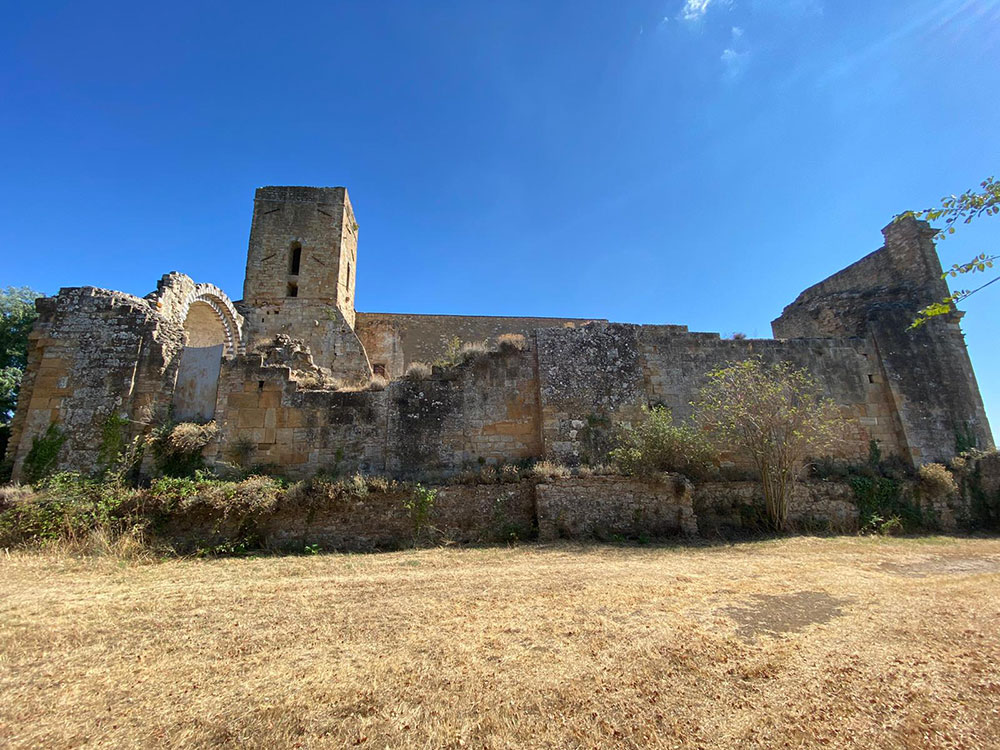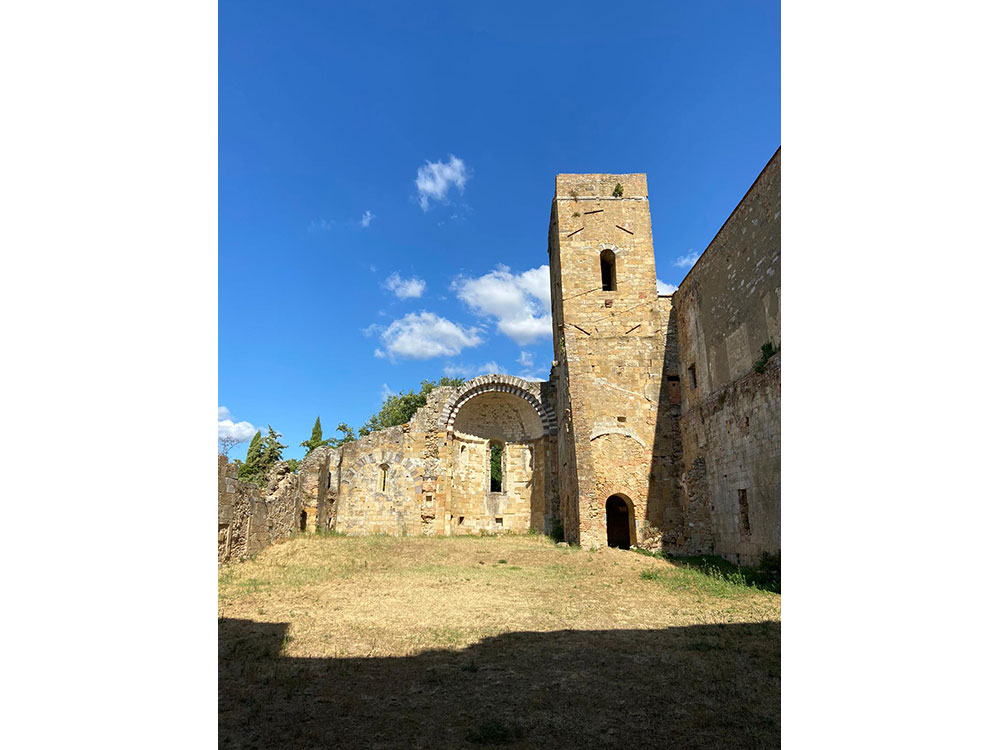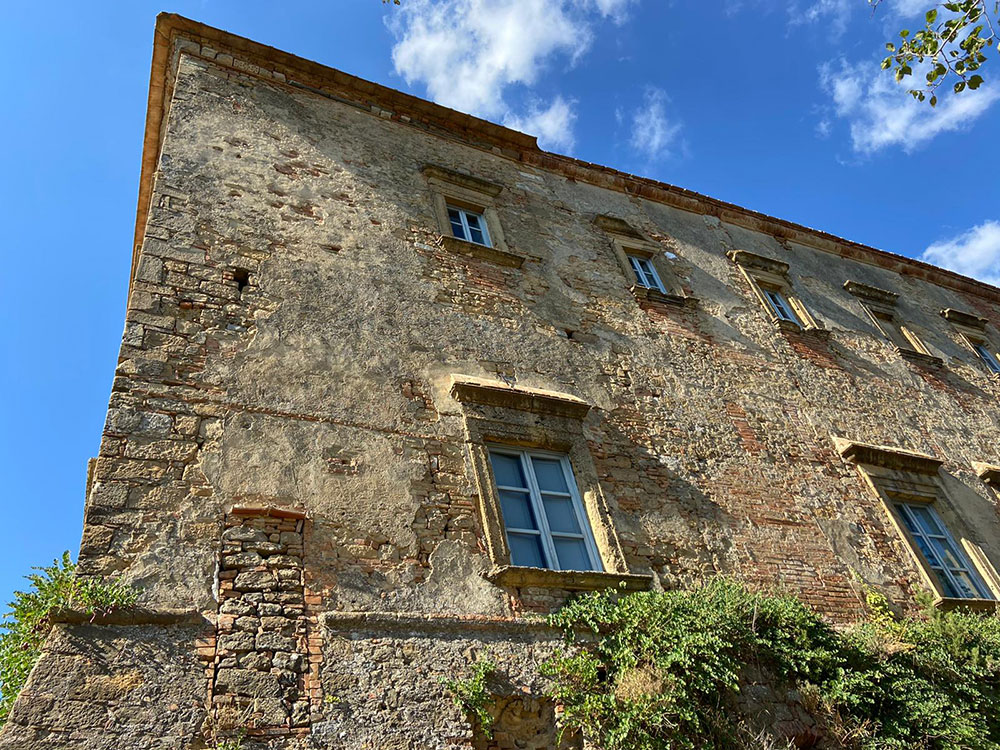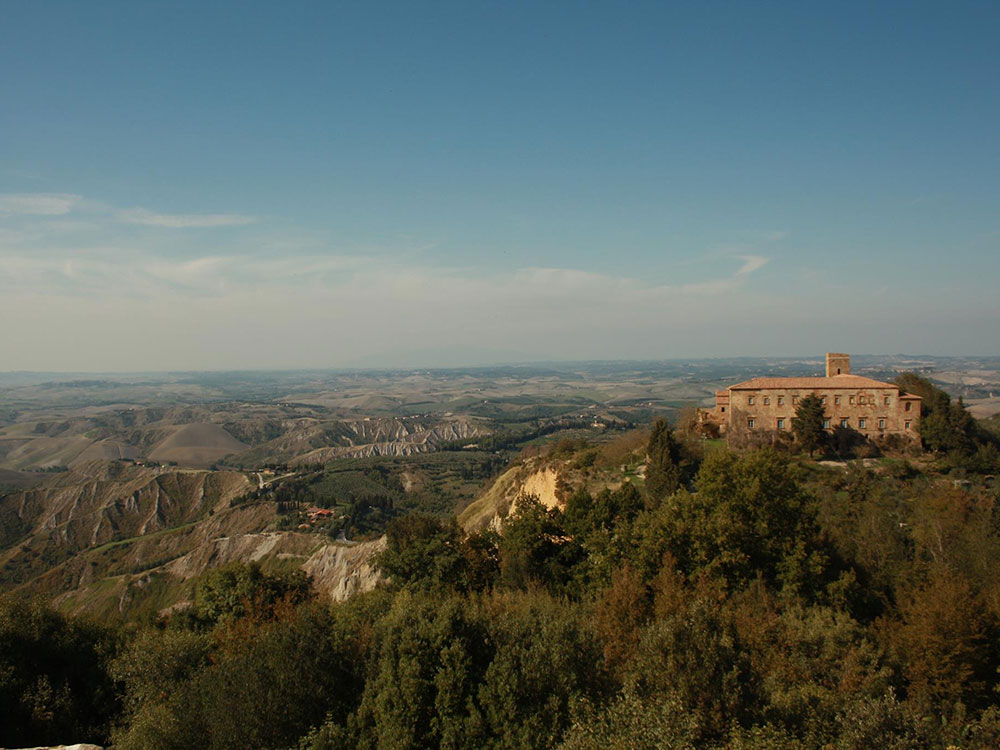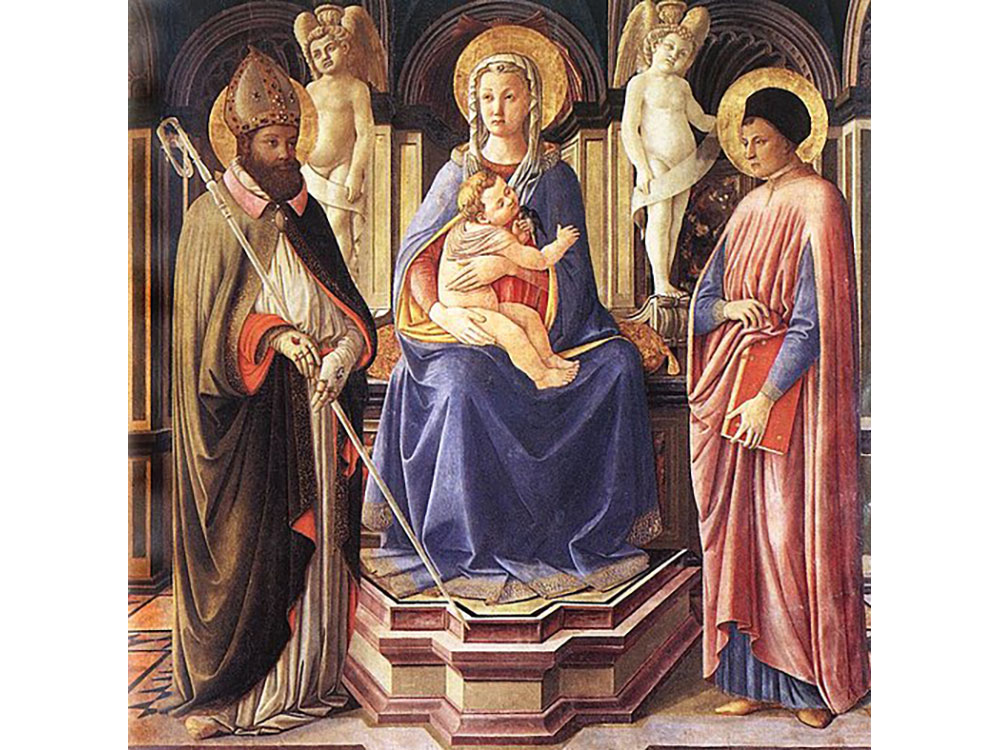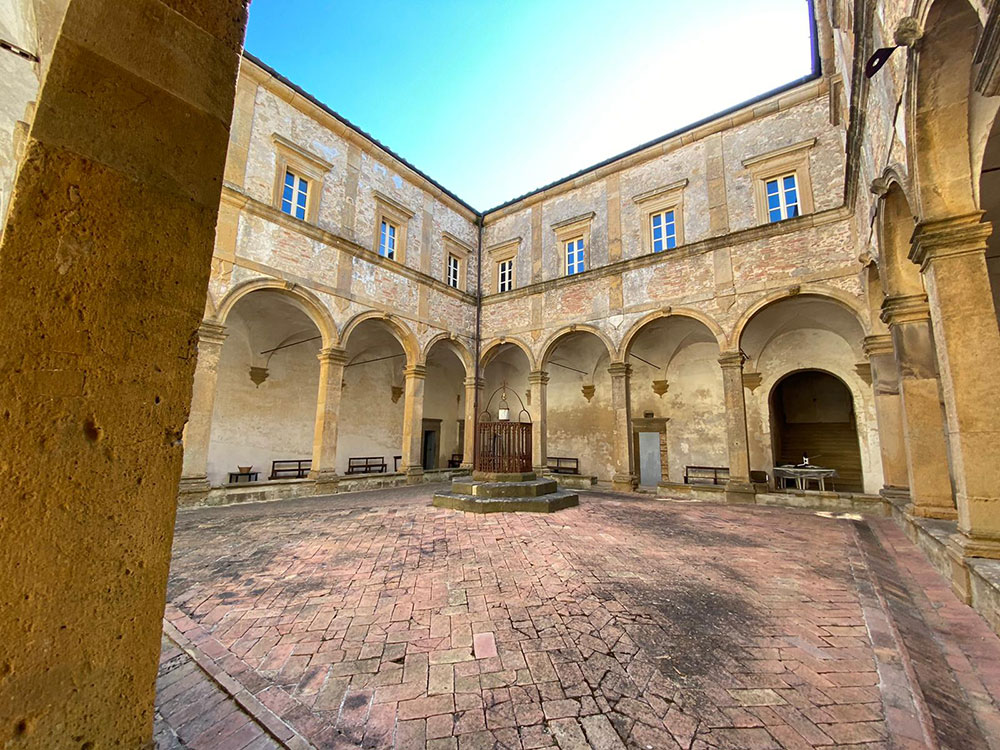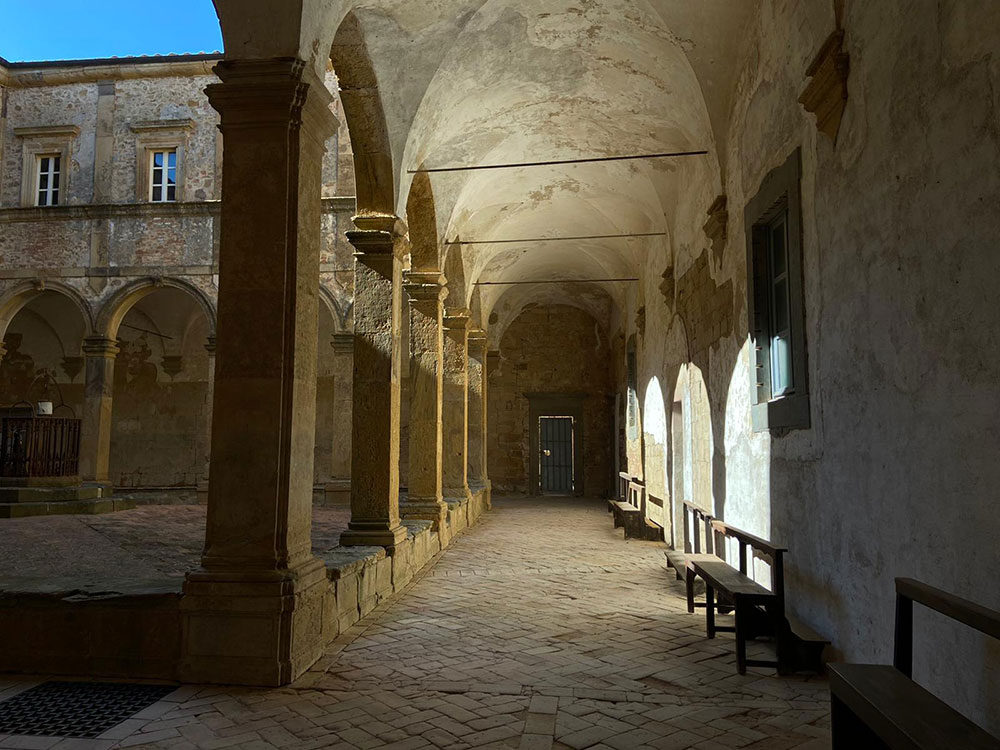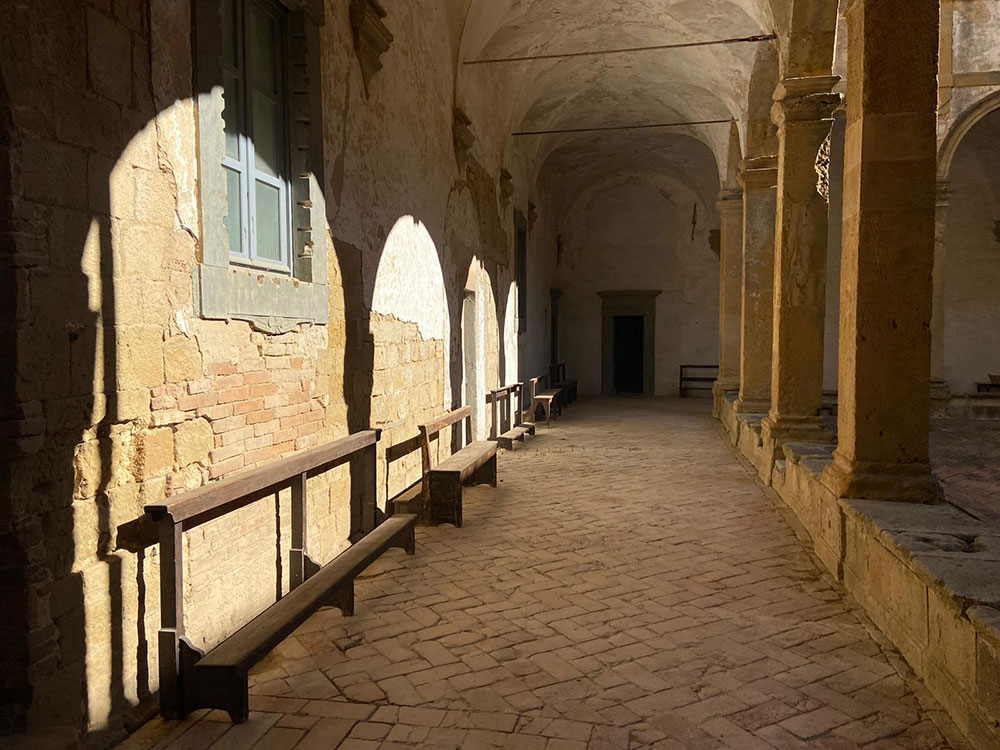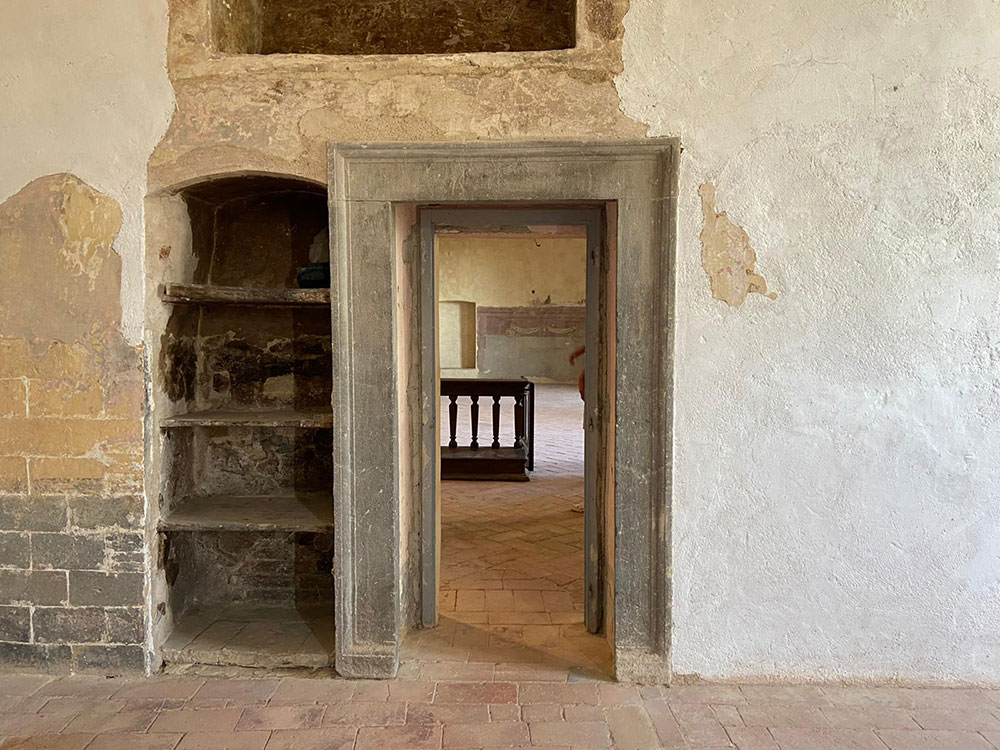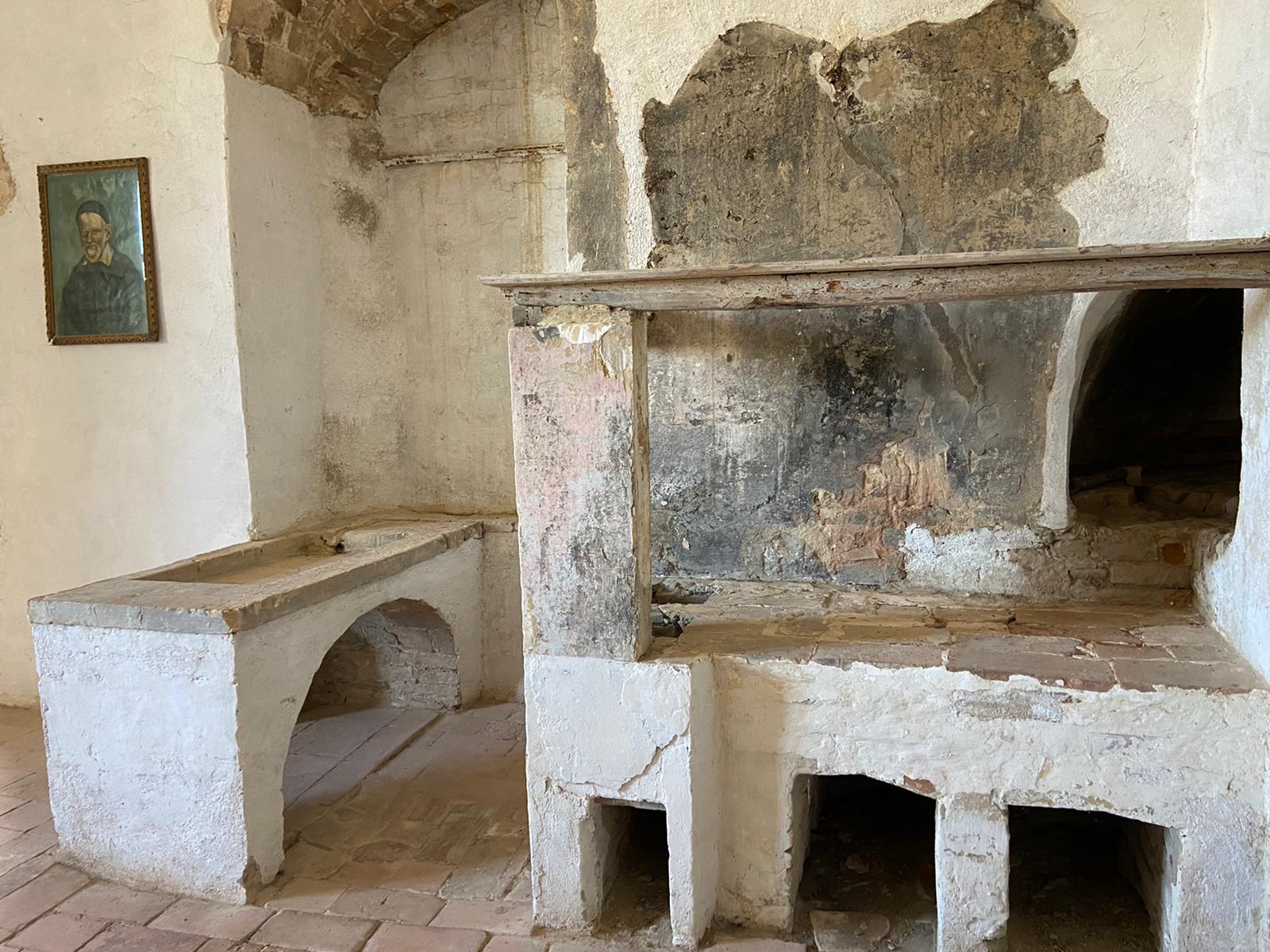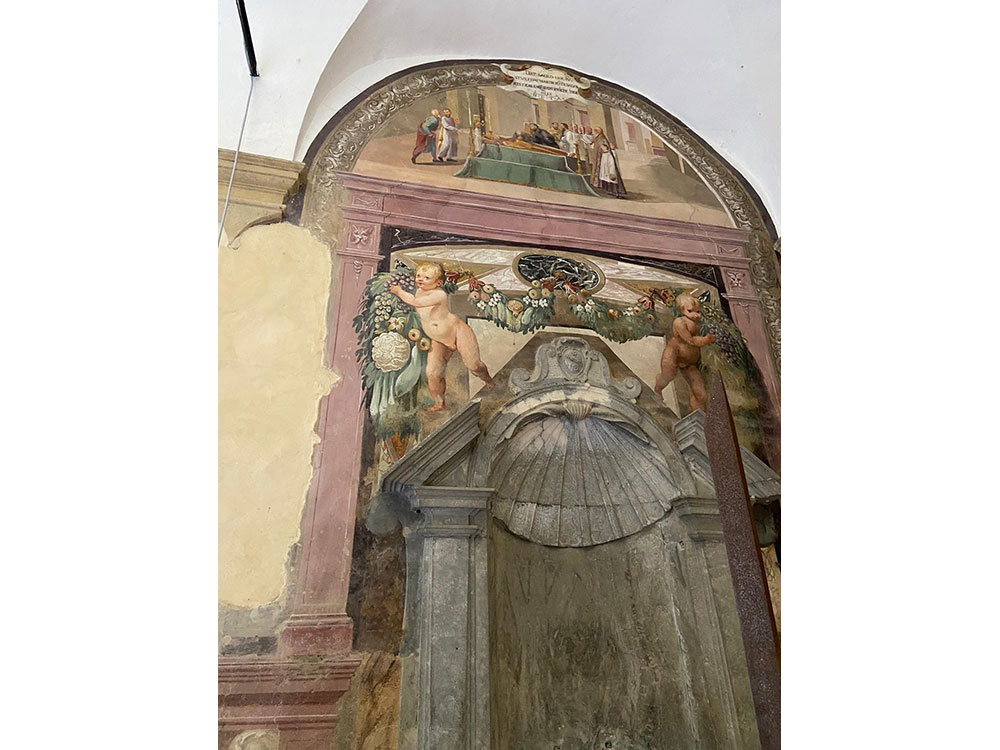Most of you have certainly heard of Pisa, the city famous all over the world for its steeply leaning tower but as always Casa Chiesi drifts away from the obvious and takes you to a very fascinating, less known, location in the same area. Between Pisa and Siena, we find a beautiful town called Volterra (on which sooner or later we will do a dedicated article) but this is not the destination of our journey either: leaving the town center and traveling for about 2 km on the Volterrana Provincial Road, you arrive at the Badia Camaldolese.
This ancient and impressive construction stands on a rock formation known as Le Balze di Volterra located between the Val di Cecina and the Valle dell’Era. This vast area is determined by the characteristic soil structure, affected by widespread forms of erosion typical of clay soils that causes a rapid infiltration of rainwater, creating failures so large as to form vertical walls, with underlying gullies.
The panorama that has been created over time is truly breathtaking: imagine cliffs overlooking the sea where, instead of looking out over the waves, you are facing a rural panorama. The remarkable thing is that this feeling of the coast is reinforced by the proximity of the sea: in a half-hour drive from Volterra, you can reach Cecina and the Mediterranean. The scent of the sea licks this slice of land that integrates with the soft beauty of the Tuscan countryside with the addition of a typically Mediterranean atmosphere pervaded by low vegetation and its aromas.
Precisely because of these continuous landslides that make the area dangerous and unsuitable for settlements, the Abbey has been abandoned by its inhabitants and only recently subjected to a small restoration and consolidation work after having reached a very sad condition of decay.
The Abbey, dedicated to Santi Giusto and Clemente, patron saints of the city of Volterra, dates back to 1034. Giusto and Clemente (6th century A.C.) were, according to tradition, the evangelizers of the area; based on hagiographic texts, Giusto and Clemente (assumed to be two brothers) together with other ecclesiastics led by Bishop Regulus left Africa around 537 because they were persecuted by the Vandals.
Just to give them a face we take for granted the portrait of the two saints with Holy Mary and Baby Jesus that we find at the Museo dell’Opera del Duomo in Prato.
The Abbey was originally founded by Benedictine monks; in 1113 it passed to the Camaldolese monks that, after a violent earthquake in mid-XIX century, left it and moved to a safer place.
The annexed church did not survive the earthquake. Despite many tries to stop the landslide phenomenon, it was only thanks to reforestation, that the population managed at least to slow down the erosion.
However, only the beautiful cloister and the large refectory were saved from the slow and inexorable decay to which the building was subjected.
The refectory is still decorated with a cycle of frescoes by Donato Mascagni (late 16th century) and tells the story of San Clemente, San Giusto, and San Ottaviano🙁 their arrival at the port of Populonia near the city of Volterra from Africa (in this frescoes you can recognize the fortress) in conjunction with the troops of the Goths who, in the sixth century, tried to conquer Volterra; the hagiographic episode that tells how thanks to the prayer of San Giusto a group of angels stole several grain sacks from the enemy and took them to the city afflicted with a severe shortage of food due to the siege.
In the penultimate scene, we see how the soldiers from Volterra, on the advice of San Giusto, throw bread from the walls of the fortress, baked with the grains stolen from the enemy’s stock. The fresco tells how the enemy, convinced that the fortress is therefore still so full of food and the inhabitants organized for long resistance, decide to abandon the siege and leave
In the last painting, we see a procession led by San Giusto facing the snakes, which indicates the infidels. Other frescoes are found in the lunettes above the windows.
Some grates on the terracotta floor of the cloister allow you to glimpse the underground passages rich in history: we must not forget that the Volterra area, as evidenced by numerous archaeological finds, was one of the Neolithic settlements in central Italy.
The birth of the city of Velathri is due to the Etruscans who between the VI and the V century B.C built the great city walls of over seven kilometers. It is believed that this large walled perimeter included also grazing and cultivated land, capable of ensuring food in the event of prolonged sieges. Volterra submitted to the Romans around 260 BC, became part, together with other cities, of the Italic confederation.
The cloister reserves other curiosities: the first curiosity refers to how the columns inside it resisted the impact of the earthquake while the church columns collapsed. In effect, the first is made up of different segments which have therefore adapted to earthquake movements, while those of the naves, being made in a single piece, have shattered.
A brilliant engineering system collects all the rainwater and conveys it to a large cistern located under the cloister floor. Last but not least: on the floor and the walls we find lines, rectilinear grooves, and numbers: that make up a flat sundial, one of the only two existing in the world.
Reaching Volterra is not exactly convenient. Cut off from the vast majority of public transport routes, the fastest way to get there is by car. However, we must never forget that some places retain their character because they are not invaded by tourism and a genuine experience is always worth a bit of effort!
The Abbey is not always open so find out before embarking on the journey …
Some of you may know that since 1975 an organization called FAI (Fondo per l’Ambiente Italiano) has been involved in the restoration and conservation of properties that are in danger of being lost. Among the many activities this foundation in collaboration with Banca Intesa, every two years asks its members to indicate a “place of the heart” or a particularly beautiful and precious place on which they wish the future efforts of the FAI to be concentrated. This awareness-raising project that I find brilliant creates a kind of census of places in danger scattered throughout Italy. Even the Badia di Volterra deservedly entered the FAI list of “Places of the heart” and we are sure that sooner or later justice will be done to its majestic beauty.
How to get to Badia Camaldolese:
Betti
[socialWarfare]

